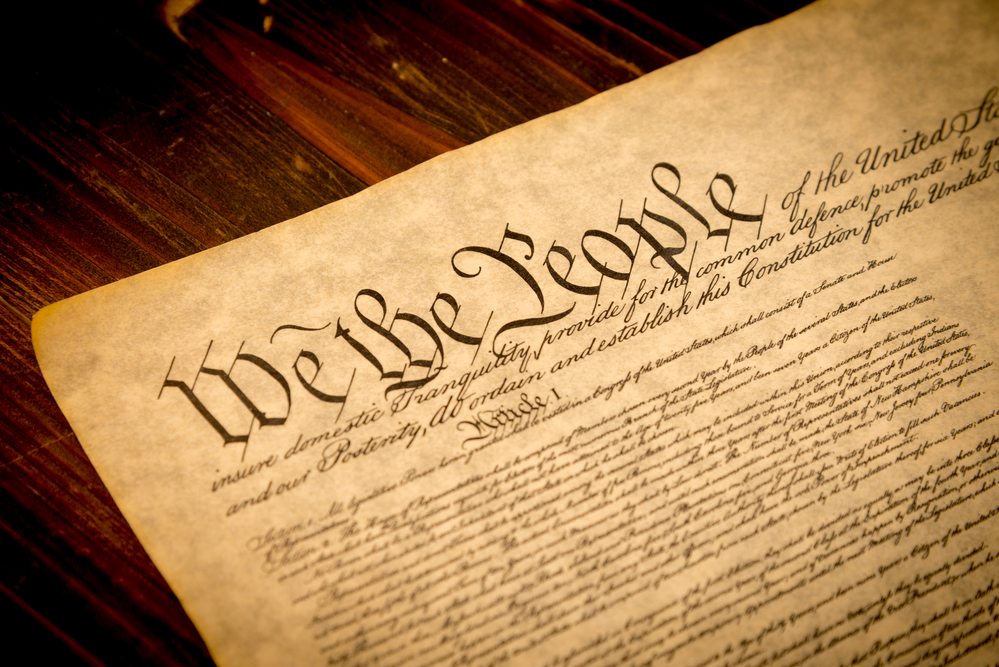As democratically elected hate machines continue to gain power across the globe, the safeguards of constitutional democracy are being put to the test.
Demagogues assume power through democratic elections and then proceed to undermine the very institutions that brought them to power.
Russia’s democratization process crumbled in October 1993, when President Boris Yeltsin bombed his own Parliament.
Hungary, initially considered a post-communist democratic success story, took an authoritarian turn overnight. In March 2013 the Fidesz Party, led by Viktor Orbán, replaced Hungary’s Constitution, muzzled its active Constitutional Court, and altered its electoral rules to make it prohibitively difficult to unseat him. These developments in Hungary took place under the watchful eye of the European Union, which stood on the sidelines as Orbán implemented his carefully engineered authoritarian scheme.
Poland was initially branded “a paragon of inclusive democracy,” but the Law and Justice Party that came to power in October 2015 began to systematically dismantle checks and balances and run roughshod over the country’s constitutional court, media, and civil service.
South Africa, previously lauded for its peaceful democratic transition after the end of apartheid, is trapped in a downward spiral as President Jacob Zuma stumbles from one corruption scandal to the next.
In my home country of Turkey, President Recep Tayyip Erdoğan transformed the country into a one-man system. Turkey has been under a state of emergency since last July, permitting the government to detain anyone for any reason without recourse to judicial review.
The list goes on and on.
Countries beautifully written constitutions, complete with separation of powers and checks and balances, continue to succumb to dictatorship.
What explains this outcome? Why do the constitutional safeguards of democracy fail to stop a leader determined to seize control?
Before I answer that question, let me begin with a brief crash course on separation of powers and checks and balances. After all, it’s been a long time since you took that civics class!
Separation of Powers 101
Separation of powers means that government power is separated into different branches—typically the legislative, the executive, and the judicial.
The concept of checks and balances, in turn, pits these separate government institutions against each other. Each branch of government has weapons that it can use against the others in order to allow, in James Madison’s terms, the ambitions of one branch to counter the ambitions of the other.
The U.S. Constitution reflects Madison’s vision in requiring at least two branches of the federal government to accomplish any major national objective. The president negotiates treaties, but the Senate ratifies them. The Congress has the power to declare war, but the president is the commander-in-chief. Legislation requires ratification by two houses of Congress, followed by approval by the president, which, in turn, is subject to constitutional review by the judiciary under the right circumstances.
Because of these weapons, each branch of government has the ability to make life miserable for the other branches.
This dynamic, Madison believed, would create a self-reinforcing check against tyranny by any one institution. The system that Madison and his brethren crafted includes intricate guides, restraints, and veto points to check rather than enable the mob, with the preservation of liberty as the ultimate goal.
That’s the theory. Of course, if things were this simple, the relatively uncomplicated task of installing these mechanisms into any constitution would be sufficient to keep tyranny at bay. But sobering realities often refuse to cooperate with Madison’s theoretical visions.
As gifted with foresight as Madison was, there was a missing link in his theory.
He failed to foresee a momentous development that would call his theory into question.
Political parties
That’s right. Political parties didn’t exist when the U.S. Constitution was penned. Our entire constitutional scheme is based on competition between government institutions (executive, legislature, and judiciary), not competition between political parties.
But today, political competition is organized around political parties, nonexistent in Madison’s time, not government institutions.
And here’s the problem: When all government branches are controlled by a single party, they lack incentives to check each other. In the United States, presidential vetoes virtually disappear when the federal government is unified under one party, and legislative delegations of power to the executive increase. With a unified party at the helm, competition between the branches turns into cooperation.
Because the political fortunes of government officials in different branches largely depend on the success of the entire party, they have strong motives to support rather than oppose each other. This dynamic can overwhelm all well-intentioned constitutional protections. The weapons created for each branch to check the others are no good if they are left unused.
To be sure, divided government generates its own problems (think stalled judicial nominations or stalemates on budget negotiations). But it also has the virtue of keeping tyranny at bay.
In the words of an influential article, what’s significant is not the separation of powers.
It’s the separation of parties.
Bold


